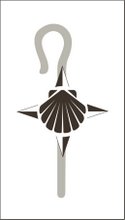Found this in the nyt.com about a part of London I love:
his is East London, a sprawling area known for its artists, anarchists and immigrants. Neighborhoods like Shoreditch, Bethnal Green and Hackney Wick have long been where a creative class could afford to live and work. Now it’s also where they play, shop and eat.
Though the main arteries are often choked by traffic, the side streets of East London can be as tranquil and pleasant as parks. The area feels light years away from central London, and totally self-sufficient, thanks to a host of enticing restaurants, shops, markets and hotels.
As Clarise Faria, the curator of the Loft Project, a private club that invites acclaimed chefs to cook meals in an airy apartment for select guests, said: “There’s no reason to go to the rest of London.”
There’s certainly no reason to go elsewhere to eat. In 2005, a shed behind a former school that now contains an artists’ studio, where Rochelle Street meets the leafy traffic circle Arnold Circus, became Rochelle Canteen, a restaurant open only for lunch. The food is bright, direct and unapologetically English: fare includes dishes like a salad of fresh peas, favas and pea shoots, and a whole sole sautéed in butter and served with cucumber and fennel. The spot has a casual elegance, and it’s easy to linger over a midweek lunch, with dogs napping in the restaurant’s walled garden and neighbors catching up with one another.
On the other side of Arnold Circus is Leila’s Shop, a small specialty store with raw wood shelves, drying sausages and nougat imported from Isfahan, Iran. On a recent visit, I was browsing the shelves of house-made jams with the cookbook author Anissa Helou, who sometimes holds cooking classes in her nearby loft, and after we stepped outside, a perfectly silent electric car whipped around the corner. The driver and Ms. Helou knew each other, and as they said their hellos under a bank of trees four stories tall, I felt that I was looking into the future, to a time when cities are gentle and everybody is friendly.
Things are busier a few blocks to the south on Redchurch Street. There are boutiques like Caravan (tasteful bric-a-brac) and Hostem (sartorial concept designs for men), and there’s Boundary, a hotel and restaurant that the designer and hotelier Terence Conran opened last year. Shoreditch House, a branch of Soho House that opened as a hotel this spring, is nearby. So is Dirty House, a soot-gray private artists’ residence designed by the conceptual architect David Adjaye; the building’s cantilevered roof seems to hover at night, as the interior lights below give it a luminescent glow.
And then there’s Columbia Road, home to an open-air flower market on Sundays since the 19th century. More recently, it has welcomed dozens of tiny shops that bustle during the week.
Enjoy!
Pace!
B
Explaining to visiting Westerners that actually no, the pyramids are not next door and yes, that is real snow, takes some time. We have endless tales of visitors arriving from the coast, wanting to climb Jebel Mousa (Mt Sinai) and arriving in their best beach clothes only to find that the top of Jebel Mousa at 4am in the morning during winter with a high wind, is, shall we say, somewhat cold.

